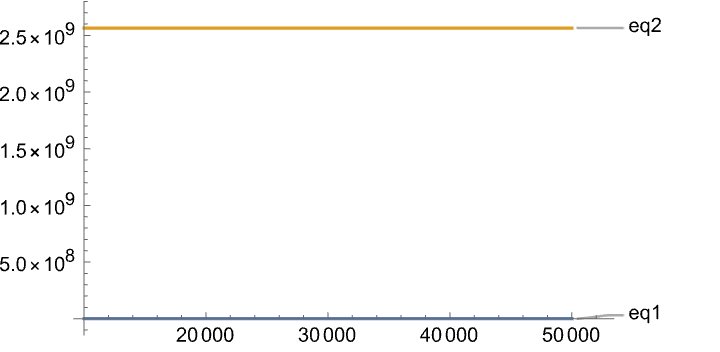Why do you think
The should be equal around 41000.
In the domain over which you are plotting the expressions, they are different by 9 orders of magnitude.
ClearAll[x, pnp];
eq1 = ((x*Sqrt[pnp^3/(pnp*x^2 + x)] + x^4/(pnp^2 + x)) - pnp)
eq2 = pnp - (Sqrt[((x^2*pnp^4 + 2*pnp*x^5) + x^8)/pnp^4] - (1 - x^2/(2*pnp)))
pnp = 2564855352;
Plot[{eq1, eq2}, {x, 10000, 50000},
PlotRange -> All,
PlotLabels -> "Expressions"]

By looking at the two expressions it is clear that they can only be close in magnitude for very large values of x.
Plot[{eq1, eq2}, {x, 9000000, 10000000},
PlotRange -> All,
PlotLabels -> "Expressions"]

FindRoot[eq1 == eq2, {x, 10000000}, WorkingPrecision -> 10]
(* {x -> 9.583792130*10^6} *)
Which is not ~41000.
WL is case-sensitive, this does nothing and returns unevaluated. Should be Clear.
clear[x, pnp]